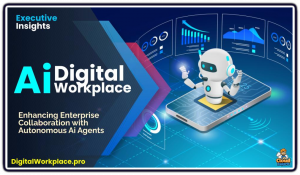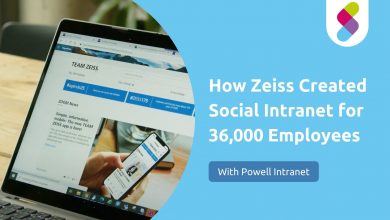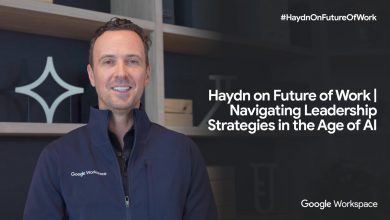Zoom AI – Harnessing Zoom’s Evolution into an AI Company
Zoom’s CEO and the Future of Work: Could AI Unlock a 4-Day Work Week?
 Zoom’s journey from a video conferencing tool to an AI-first work platform reflects a strategic pivot driven by technological innovation and shifting workplace demands.
Zoom’s journey from a video conferencing tool to an AI-first work platform reflects a strategic pivot driven by technological innovation and shifting workplace demands.
Founded in 2011 by Eric S. Yuan, Zoom initially gained prominence for its reliable, user-friendly video conferencing solution, becoming a household name during the 2020 pandemic when remote work surged.
However, as the world transitioned to hybrid work models, Zoom’s leadership recognized the need to evolve beyond its original scope, reimagining itself as a comprehensive collaboration ecosystem powered by artificial intelligence.
The Evolution to an AI-First Platform
Zoom’s transformation began with incremental enhancements to its core offerings—video meetings, chat, and phone services—but took a significant leap with the integration of AI.
The introduction of the Zoom AI Companion in 2023 marked a turning point, shifting the platform from a communication tool to a productivity-enhancing assistant. Initially launched as a federated AI system leveraging multiple language models—including partnerships with OpenAI and Anthropic, alongside Zoom’s own custom-built small language model—AI Companion automated tasks like meeting summaries and email drafting, freeing users to focus on higher-value work.
By 2024, Zoom unveiled AI Companion 2.0 at Zoomtopia, signaling a deeper commitment to an AI-first approach. This upgraded assistant integrated with third-party apps (e.g., Microsoft Outlook, Google Calendar, ServiceNow) and offered advanced features like real-time meeting insights, actionable next steps, and customizable workflows via the AI Studio.
The rebranding from Zoom Video Communications to Zoom Communications Inc. in November 2024 underscored this shift, emphasizing a broader mission beyond video to deliver an “AI-first work platform for human connection.”
The launch of Zoom Workplace in 2024 further solidified this evolution. This open collaboration platform wove AI into every facet—meetings, chat, phone systems, and collaborative tools like Zoom Docs—aiming to streamline workflows and enhance productivity.
Innovations like Zoom Tasks, introduced in early 2025, leveraged AI to detect and manage action items across conversations, while agentic AI capabilities enabled the platform to proactively handle tasks, transforming meetings into actionable milestones rather than mere discussions.
Zoom’s federated AI strategy—combining its own models with industry-leading ones—allowed for flexibility, cost-efficiency, and high-quality outputs, distinguishing it from competitors like Microsoft Teams or Google Meet, which rely more heavily on single-model ecosystems. This approach, coupled with a no-additional-cost model for many AI features, positioned Zoom as a versatile, accessible player in the AI-driven workplace landscape.
Eric Yuan’s Vision for the Future of Work
Eric S. Yuan, Zoom’s founder and CEO, envisions a future where AI fundamentally redefines work, enabling greater efficiency, creativity, and human connection.
His vision hinges on AI not as a replacement for humans but as a seamless partner that eliminates mundane tasks, allowing people to focus on what they do best: innovate, collaborate, and build relationships. He sees Zoom evolving into a platform where users can start their day and remain within a unified ecosystem—handling meetings, managing projects, and engaging with teams—without the friction of switching tools.
Yuan has speculated that AI could unlock radical possibilities, such as a four-day workweek, by drastically reducing time spent on repetitive tasks. In a 2024 interview with The Verge, he proposed the concept of “digital twins”—AI-powered clones that could attend meetings or perform routine duties, freeing individuals for strategic or personal pursuits.
While acknowledging the uncertainties of such advancements, he believes that within a decade, technologies like AI, augmented reality, and distributed computing could make work feel as intuitive as a face-to-face conversation, regardless of physical distance.
Central to Yuan’s vision is the idea of “working happy.” He imagines a workplace where AI anticipates needs (e.g., scheduling meetings, summarizing discussions, or suggesting optimal office days) and fosters a hybrid model that balances flexibility with trust. This aligns with Zoom’s own hybrid policy—requiring employees in the office twice weekly—reflecting his belief that in-person interaction remains vital for culture and innovation, while AI bridges the gaps in remote settings.
Yuan also emphasizes customer-centricity and adaptability. He aims for Zoom to be an open platform, integrating with diverse tools and offering customizable AI agents tailored to specific industries or workflows (e.g., healthcare’s clinical notes feature). His long-term aspiration is a multi-sensory, frictionless experience—where users feel as if they’re sharing a physical space, complete with handshake-like interactions or the aroma of coffee—blending AI with human connection in unprecedented ways.
Conclusion
Zoom’s evolution into an AI-first platform reflects a deliberate response to the demands of modern work—hybrid, fast-paced, and collaborative. Under Yuan’s leadership, the company has shifted from a video conferencing pioneer to a holistic work solution, leveraging AI to enhance efficiency and creativity.
His vision for the future of work is bold yet grounded: a world where AI empowers people to achieve more, reduces drudgery, and fosters meaningful connections, potentially reshaping societal norms around productivity and presence. As Zoom continues to innovate, it aims to lead this transformation, proving that the future of work isn’t about more tools, but the right ones working in harmony.



